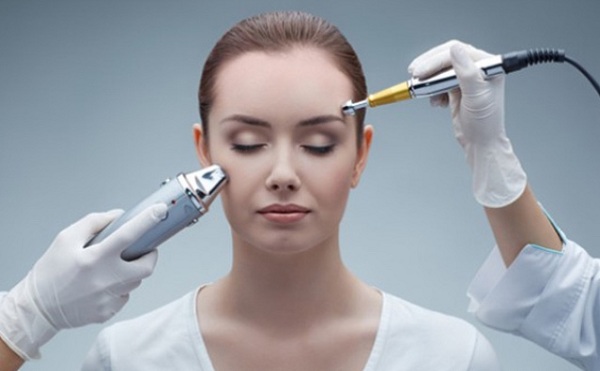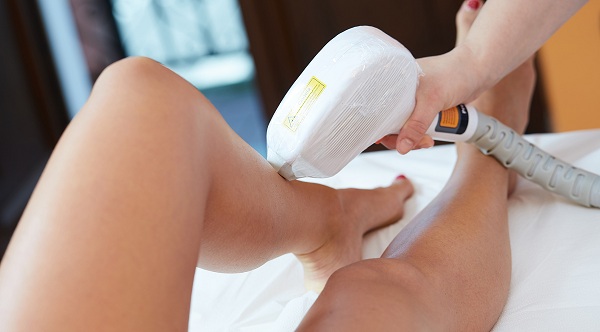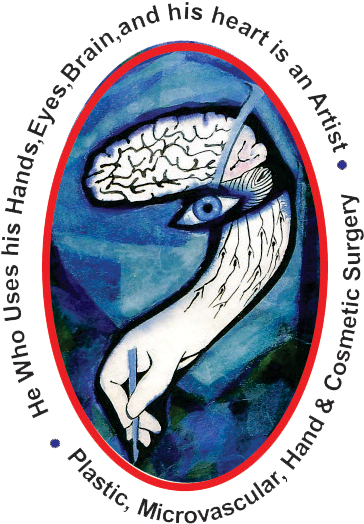Laser Therapy
Laser therapies are medical treatments that use focused light. Unlike most light sources, light from a laser (which stands for light amplification by stimulated emission of radiation) is tuned to specific wavelengths. This allows it to be focused into powerful beams. Laser light is so intense that it can be used to shape diamonds or cut steel.

Laser Hair Removal
Laser hair removal is the process of hair removal by means of exposure to pulses of laser light that destroy the hair follicle. It had been performed experimentally for about twenty years before becoming commercially available in 1995 and 1996.
Laser Resurfacing
Laser resurfacing is a facial rejuvenation procedure that uses a laser to improve the skin’s appearance or treat minor facial flaws. It can be done with: Ablative laser or Non-Ablative laser. Both methods can be delivered with a fractional lasers.
Questions? We got Answers!
Laser therapy techniques vary based on the procedure.
If a tumor is being treated, an endoscope (a thin, lighted, flexible tube) may be used to direct the laser and view tissues inside the body. The endoscope is inserted through an opening in the body, such as the mouth. Then, the surgeon aims the laser and shrinks or destroys the tumor.
In cosmetic procedures, lasers are usually applied directly to the skin.
Lasers are more precise than traditional surgical instruments, and cuts can be made shorter and shallower. This causes less damage to tissue.
Laser operations are usually shorter than traditional surgeries. They can often be done on an outpatient basis. You also don’t have to spend the night in the hospital. If general anesthesia is required, it’s usually used for a shorter time.
People also tend to heal faster with laser operations. You may have less pain, swelling, and scarring than with traditional surgeries
Recovery after laser surgeries is similar to that of typical surgery. You may need to rest for the first few days after the operation and take over-the-counter pain medication until the discomfort and swelling have gone down.
Recovery after laser therapy varies based on the type of therapy you received and how much of your body was affected by the therapy.
You should follow any orders your doctor gives you very closely. For example, if you have laser prostate surgery, you may need to wear a urinary catheter. This can aid in urinating right after the surgery.
If you received therapy on your skin, you may experience swelling, itching, and rawness around the treated area. Your doctor may use an ointment and dress up the area so that it’s airtight and watertight.
For the first couple of weeks after the treatment, be sure to do the following:
- Use over-the-counter medications for pain, such as ibuprofen (Advil) or acetaminophen (Tylenol).
- Clean the area regularly with water.
- Apply ointments, such as petroleum jelly.
- Use ice packs.
- Avoid picking any scabs.
Once the area has become overgrown with new skin, you may use makeup or other cosmetics to cover up any noticeable redness if you’d like.
Questions? We got Answers!
Laser therapy techniques vary based on the procedure.
If a tumor is being treated, an endoscope (a thin, lighted, flexible tube) may be used to direct the laser and view tissues inside the body. The endoscope is inserted through an opening in the body, such as the mouth. Then, the surgeon aims the laser and shrinks or destroys the tumor.
In cosmetic procedures, lasers are usually applied directly to the skin.
Lasers are more precise than traditional surgical instruments, and cuts can be made shorter and shallower. This causes less damage to tissue.
Laser operations are usually shorter than traditional surgeries. They can often be done on an outpatient basis. You also don’t have to spend the night in the hospital. If general anesthesia is required, it’s usually used for a shorter time.
People also tend to heal faster with laser operations. You may have less pain, swelling, and scarring than with traditional surgeries
Recovery after laser surgeries is similar to that of typical surgery. You may need to rest for the first few days after the operation and take over-the-counter pain medication until the discomfort and swelling have gone down.
Recovery after laser therapy varies based on the type of therapy you received and how much of your body was affected by the therapy.
You should follow any orders your doctor gives you very closely. For example, if you have laser prostate surgery, you may need to wear a urinary catheter. This can aid in urinating right after the surgery.
If you received therapy on your skin, you may experience swelling, itching, and rawness around the treated area. Your doctor may use an ointment and dress up the area so that it’s airtight and watertight.
For the first couple of weeks after the treatment, be sure to do the following:
- Use over-the-counter medications for pain, such as ibuprofen (Advil) or acetaminophen (Tylenol).
- Clean the area regularly with water.
- Apply ointments, such as petroleum jelly.
- Use ice packs.
- Avoid picking any scabs.
Once the area has become overgrown with new skin, you may use makeup or other cosmetics to cover up any noticeable redness if you’d like.



